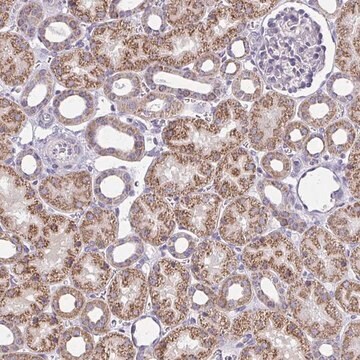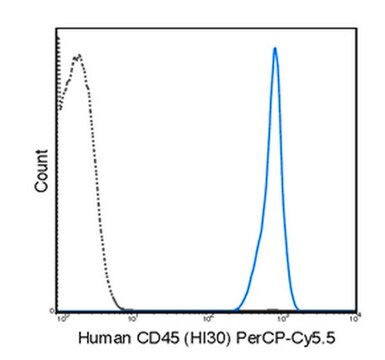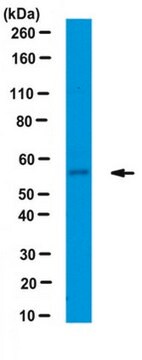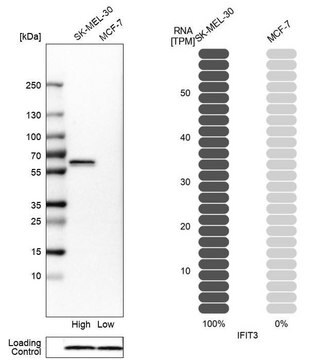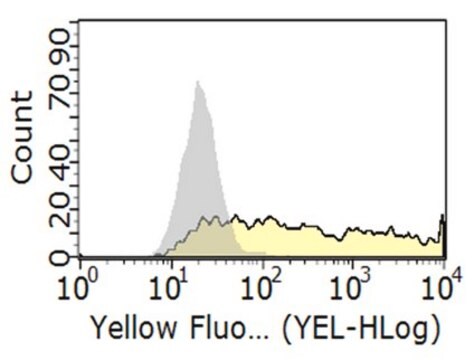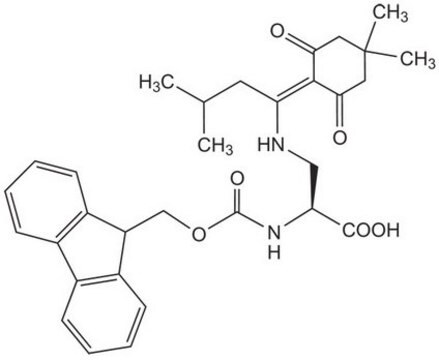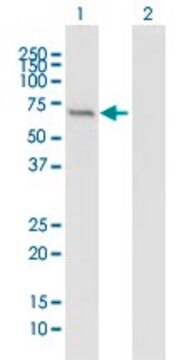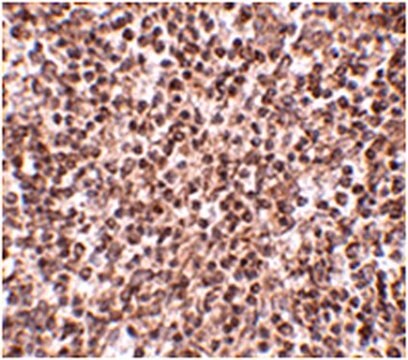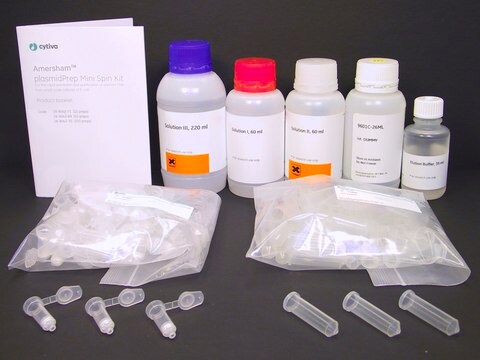ABF1048
Anti-IFIT3 Antibody
serum, from rabbit
Sinônimo(s):
Interferon-induced protein with tetratricopeptide repeats 3, IFIT-3, Glucocorticoid-attenuated response gene 49 protein, GARG-49, P49, IRG2, IFIT3
About This Item
Produtos recomendados
fonte biológica
rabbit
Nível de qualidade
forma do anticorpo
serum
tipo de produto de anticorpo
primary antibodies
clone
polyclonal
reatividade de espécies
mouse, human
técnica(s)
flow cytometry: suitable
immunocytochemistry: suitable
immunohistochemistry: suitable (paraffin)
immunoprecipitation (IP): suitable
western blot: suitable
nº de adesão NCBI
nº de adesão UniProt
Condições de expedição
wet ice
modificação pós-traducional do alvo
unmodified
Informações sobre genes
human ... IFIT3(3437)
Descrição geral
Especificidade
Imunogênio
Aplicação
Inflammation & Immunology
Immunoglobulins & Immunology
Western Blotting Analysis: A representative lot detected Ifit3/ISG49 induction in RAW264.7 and wild-type, but not IRF3 or Stat1 knockout, MEFs upon Sendai virus/SeV infection, dsRNA or INF-beta stimulation in cultures, as well as in liver/lung/spleen/colon tissues from mice after dsRNA or INF-alpha i.v. injection (Fensterl, V., et al. (2008). J Virol. 82(22):11045-11053).
Western Blotting Analysis: A representative lot detected differential Ifit3/ISG49 inductions between murine MPC podocytes and primary murine glomerular mesangial cells in response to Sendai virus (SeV), encephalomyocarditis virus (EMCV), and vesicular stomatitis virus (VSV) infection (Fensterl, V., et al. (2008). J Virol. 82(22):11045-11053).
Western Blotting Analysis: A representative lot selectively detected exogenously expressed murine Ifit3/ISG49 and human IFIT3/ISG60, but not murine Ifit1/ISG56 or Ifit2/ISG54, in transfected HT1080 cells (Fensterl, V., et al. (2008). J Virol. 82(22):11045-11053).
Western Blotting Analysis: A representative lot detected Ifit3/ISG49 induction in IFN-alpha-stimulated primary murine spleen B cells and in IFN-beta-stimulated MEFs (Fensterl, V., et al. (2008). J Virol. 82(22):11045-11053; Fensterl, V., et al. (2012). PLoS Pathog. 8(5):e1002712).
Immunoprecipitation Analysis: A representative lot selectively immunoprecipitated exogenously expressed murine Ifit3/ISG49, but not Ifit1/ISG56, from transfected MEFs (Fensterl, V., et al. (2008). J Virol. 82(22):11045-11053).
Immunohistochemistry Analysis: A representative lot detected differential Ifit3/ISG49 induction among various cell types in formaldehyde-fixed, paraffin-embedded kidney tissue sections from mice after Sendai virus (SeV) or dsRNA i.v. injection (Fensterl, V., et al. (2008). J Virol. 82(22):11045-11053).
Flow Cytometry Analysis: A representative lot detected IFN-beta-induced Ifit3/ISG49 immunoreactivity using murine bone marrow-derived dendritic cells, as well as isolated CD3+ (T cells) and B220+ (B cells) peripheral blood cells (Fensterl, V., et al. (2008). J Virol. 82(22):11045-11053).
Immunocytochemistry Analysis: A representative lot detected IFN-beta-induced Ifit3/ISG49 expression in MEFs (Fensterl, V., et al. (2008). J Virol. 82(22):11045-11053).
Flow Cytometry Analysis: A representative lot (1:500 dilution) detected IFN-beta-induced Ifit3/ISG49 immunoreactivity in primary murine macrophages (Courtesy of Dr. Ganes C. Sen, Cleveland Clinic, OH).
Qualidade
Western Blotting Analysis: A 1:500 dilution of this antibody detected IFIT3 in 10 µg of IFN beta treated RAW264.7 cell lysate.
Descrição-alvo
forma física
Armazenamento e estabilidade
Handling Recommendations: Upon receipt and prior to removing the cap, centrifuge the vial and gently mix the solution. Aliquot into microcentrifuge tubes and store at -20°C. Avoid repeated freeze/thaw cycles, which may damage IgG and affect product performance.
Outras notas
Exoneração de responsabilidade
Não está encontrando o produto certo?
Experimente o nosso Ferramenta de seleção de produtos.
Código de classe de armazenamento
12 - Non Combustible Liquids
Classe de risco de água (WGK)
WGK 1
Ponto de fulgor (°F)
Not applicable
Ponto de fulgor (°C)
Not applicable
Certificados de análise (COA)
Busque Certificados de análise (COA) digitando o Número do Lote do produto. Os números de lote e remessa podem ser encontrados no rótulo de um produto após a palavra “Lot” ou “Batch”.
Já possui este produto?
Encontre a documentação dos produtos que você adquiriu recentemente na biblioteca de documentos.
Nossa equipe de cientistas tem experiência em todas as áreas de pesquisa, incluindo Life Sciences, ciência de materiais, síntese química, cromatografia, química analítica e muitas outras.
Entre em contato com a assistência técnica